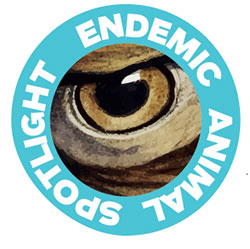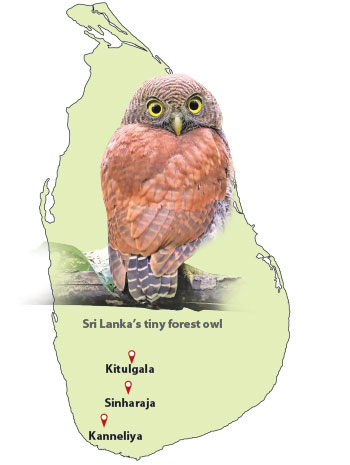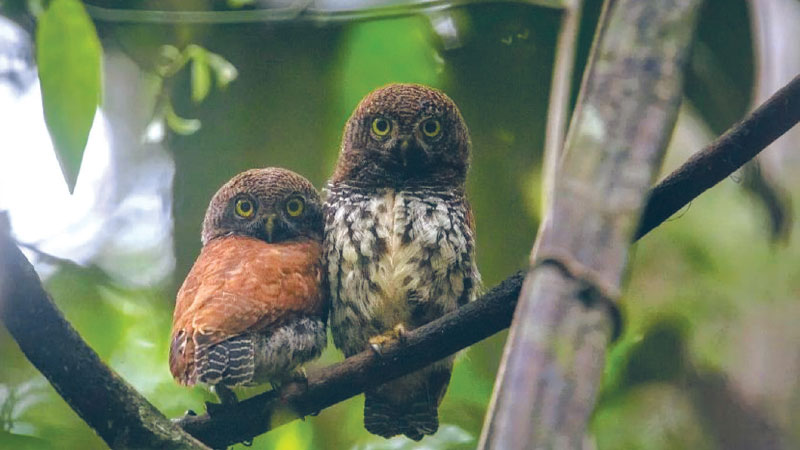Deep in the forests of Sri Lanka, hidden among the tall trees and green leaves, lives a small and mysterious bird—the chestnut-backed owlet, galucidium castanotum. With its round yellow eyes, fluffy feathers, and soft kroo-kroo call, this little owl is one of our country’s most special and cute birds.
A tiny owl
It loves to live in Wet Zone forests like those in Sinharaja, Kitulgala, and Kanneliya. These forests are full of tall trees, rain, and insects—perfect for an owlet.
This bird gets its name from the rich chestnut-brown feathers on its back. Its head and chest are covered in soft spotted brown and white feathers, and its big, round yellow eyes give it a curious, alert look. Even though it’s an owl, it’s quite tiny—only about 20 centimeters long.
Daytime owl?
Most owls sleep during the day and wake up at night. But the chestnut-backed owlet is different—it’s active during the day, that’s why it’s called a diurnal owl. You might spot one perched quietly on a branch in the morning or late afternoon, watching for movement on the forest floor.
What’s for dinner?
These owlets are expert hunters. They feed on:
- Insects like grasshoppers, beetles, and crickets
- Small lizards
- Sometimes even tiny birds
With their sharp eyes and fast swoop, they can catch their prey in the blink of an eye. Their soft feathers help them fly silently—so their dinner doesn’t even hear them coming.
coming.
A hidden home
Chestnut-backed owlets don’t build nests like other birds. Instead, they use hollowed out tree trunks to lay their eggs and raise their chicks.
A mother owlet usually lays two to three eggs, and both parents take care of the babies until they are old enough to fly.
Why we must protect them
Sadly, these lovely owlets are becoming harder to find. That’s because, their homes, the forests are being cut down for farms and buildings and there is less space and fewer trees for them to live in.
Because of these problems, the chestnut-backed owlet is considered a near-threatened species. That means it’s not endangered yet, but it’s at risk if we don’t protect its home.
How can we help?
You can be a hero to our little owl friend by:
- Learning more about forest animals
- Telling others how important it is to protect forests
- Supporting nature parks and reserves like Sinharaja
Even small actions—like planting trees or keeping the environment clean—can help birds like the chestnut-backed owlet to survive.
A forest treasure
The chestnut-backed owlet may be small, but it has a big role to play in our forests. With its bright eyes, soft hoots, and quiet courage, it reminds us that every tiny creatures deserve a safe and happy home.
So next time you’re near a forest, look up—you might just spot a little brown ball of feathers, with large eyes watching you from the treetops.







